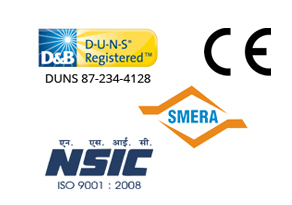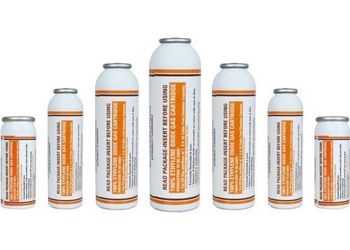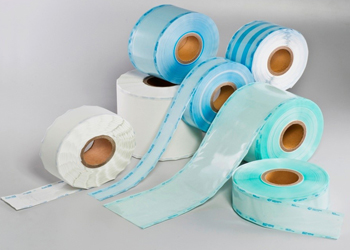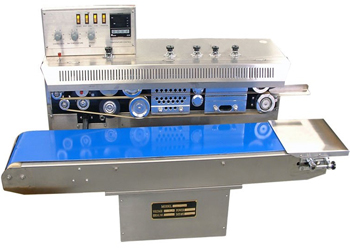In industries where contamination control is critical, sterilization is an essential process to ensure the safety and quality of products. Ethylene Oxide (ETO) sterilization is one of the most widely used methods for sterilizing heat-sensitive products, including medical devices, pharmaceutical products and laboratory equipment. Sterilizers are designed to safely and effectively sterilize materials by using ethylene oxide gas, which kills microorganisms and bacteria without the need for heat.
When selecting an industrial sterilizer, particularly in the ETO industry, one of the key decisions to make is whether to opt for a single door or double door ETO sterilizer. Each configuration offers distinct advantages depending on your operational needs, the volume of sterilization and safety concerns. Understanding these differences can help ensure that your industrial sterilization system is both efficient and effective.
In this article, we will explore the differences between single door and double door ETO sterilizers, the benefits of each and which one may be best suited for your industrial sterilization process.
How ETO Sterilization Works?
The ETO sterilization process involves several stages:
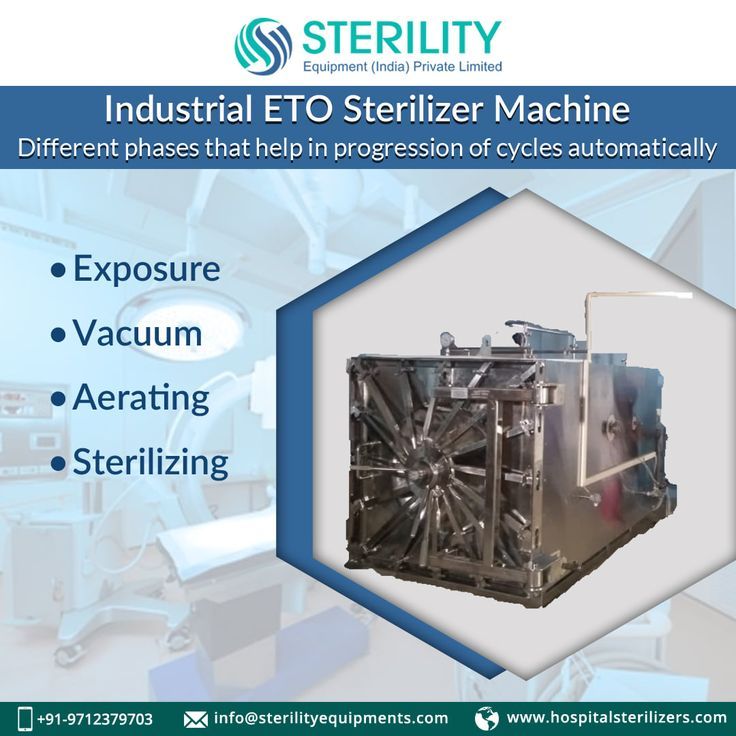
- Vacuum Phase: The sterilizer removes air from the chamber, ensuring that the ethylene oxide gas can fully penetrate the materials being sterilized.
- Exposure Phase: The materials are exposed to the ethylene oxide gas, which kills microorganisms.
- Aeration Phase: After exposure, the materials are aerated to remove any remaining ethylene oxide gas, making them safe for use.
Both single door and double door ETO sterilizers perform these essential steps, but the configuration of the door system affects the overall workflow, safety and efficiency of the process.
Single Door ETO Sterilizers: Advantages and Applications
Single door ETO sterilizers feature a single access point for both loading and unloading materials. This configuration is simpler and typically more cost-effective, making it an attractive option for small to medium-sized industrial operations.
How Single Door ETO Sterilizers Operate?
In a single door system, the operator loads and unloads materials through the same door. The sterilization chamber undergoes the typical phases of vacuum, exposure and aeration, all controlled by the sterilizer’s automated system.
Advantages of Single Door ETO Sterilizers
- Cost-Effective: Single door sterilizers are generally less expensive than their double door counterparts, both in terms of initial investment and maintenance.
- Simplified Design: With only one access point, the design of single door ETO sterilizers is straightforward, making them easier to install and maintain. They are an ideal choice for operations where sterilization is needed but not at the high volumes that would justify a more complex system.
- Space-Saving: Due to their smaller footprint, single door sterilizers are well-suited for operations where space is limited. They are compact and take up less room compared to double door models.
When to Use a Single Door ETO Sterilizer?
- Low to Medium Volume: Single door sterilizers are suitable for facilities with less frequent sterilization needs or lower volumes of materials.
- Tighter Budgets: For smaller companies or businesses that do not have the budget for larger systems, single door ETO sterilizers provide an affordable option.
- Smaller Facilities: If your workspace is restricted, a single door sterilizer is a more practical solution due to its compact design.
Testimonial
“Excellent service and quality of machine ..“
Double Door ETO Sterilizers: Benefits and Applications
Double door ETO sterilizers feature two separate doors – one for loading and one for unloading materials. This design enhances the sterilization process, especially in high-throughput environments where efficiency and safety are critical.
How Double Door ETO Sterilizers Operate?
Double door sterilizers separate the loading and unloading phases, allowing materials to be loaded from one side and unloaded from the other. This continuous flow system improves operational efficiency, as it reduces downtime between cycles and eliminates the need for operators to access the sterilizer during sterilization.
Advantages of Double Door ETO Sterilizers
- Increased Efficiency and Productivity: The separation of loading and unloading allows for continuous processing, which reduces cycle times and increases throughput. This is especially beneficial in high-volume industries that require quick turnaround times.
- Enhanced Safety and Contamination Control: Double door systems are designed to minimize the risk of contamination by separating sterilized and non-sterilized materials. This design also reduces the operator’s exposure to potentially harmful ethylene oxide gas.
- Higher Throughput: Due to their design and operational efficiency, double door ETO sterilizer can handle larger volumes of material, making them ideal for industries where high sterilization demand is a factor.
- Better Automation Compatibility: Double door systems are often used in fully automated sterilization lines, where integration with other automated equipment ensures seamless operation.
When to Use a Double Door ETO Sterilizer?
- High-Volume Applications: For industries that require high throughput, such as the medical device industry or pharmaceutical manufacturing, a double door sterilizer can significantly increase efficiency and capacity.
- Safety-Critical Industries: Double door systems are ideal for industries with strict contamination control needs, such as hospitals, research laboratories and medical device manufacturers.
- Automated and Continuous Processing: If your sterilization process needs to be automated and continuous, a double door system is better suited for integrating with existing automated lines.
Key Differences Between Single Door and Double Door ETO Sterilizers
The primary distinction between single door and double door ETO sterilizers lies in their workflow and design. Understanding these differences is crucial for selecting the right system for your industrial application.
Workflow and Efficiency
Single Door: The process in single door ETO sterilizers is more manual, as operators must load and unload items through the same door. This can result in more downtime between cycles, reducing overall efficiency.
Double Door: The two-door design allows for simultaneous loading and unloading, improving operational efficiency and minimizing cycle times, which is essential for high-volume environments.
Safety and Contamination Control
Single Door: While single door ETO sterilizers include safety features like aeration and leak detection, there is a higher risk of contamination due to the shared entry and exit point.
Double Door: The separation of loading and unloading ensures that sterilized items do not come into contact with non-sterilized items, reducing the risk of contamination and exposure to ethylene oxide gas.
Space and Budget Considerations
Single Door: These sterilizers are more compact and cost-effective, making them a practical option for smaller facilities with limited space or budget.
Double Door: Double door sterilizers require more space and are typically more expensive due to their larger size and additional features.
Throughput and Scalability
Single Door: These sterilizers are better suited for lower volumes of sterilization and are ideal for smaller operations or businesses with less frequent sterilization needs.
Double Door: With a higher throughput capacity, double door systems are perfect for larger-scale operations that need to handle high volumes of materials quickly and efficiently.
Client Speaks
“Good machine and service.”
Choosing the Right ETO Sterilizer for Your Industrial Application
Selecting the correct type of ETO steriliser depends on several factors, including the volume of sterilization, available space, budget constraints and safety requirements. Here are some guidelines to help you make an informed decision:
Volume of Sterilization
If your business or facility requires the sterilization of large volumes of materials regularly, a double door ETO sterilizer is the best option. Its continuous flow and higher throughput capacity make it ideal for high-volume applications.
Available Space
For smaller spaces, a single door ETO steriliser offers a more compact solution. Its smaller footprint allows for efficient use of space in facilities with limited room.
Budget Considerations
Single door systems tend to be more affordable both in terms of initial cost and ongoing maintenance. However, for businesses that need higher throughput and are willing to invest in automation and efficiency, a double door system may offer long-term savings by reducing processing time and increasing productivity.
Industry-Specific Requirements
In industries where safety and contamination control are critical, such as medical device sterilisation, a double door ETO sterilizer may be the best choice. For businesses with less stringent requirements, a single door system may provide sufficient performance at a lower cost.
Conclusion:
Choosing between a single door and double door ETO sterilizer depends on several key factors, including the scale of your sterilization needs, available space, budget and safety requirements. Single door ETO sterilizers are more cost-effective and space-saving, making them ideal for smaller facilities or those with lower sterilization volumes. On the other hand, double door ETO sterilizers are better suited for high-volume, high-efficiency operations that require greater throughput, enhanced safety and automation compatibility.
By evaluating the specific needs of your industrial sterilization process, you can select the E.T.O sterilizer that will best meet your requirements, ensuring efficient and effective sterilization while maintaining safety and compliance with industry standards.

